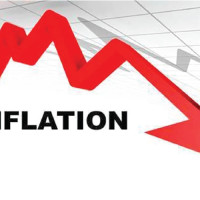- Wednesday, 17 September 2025
GST 2.0 Aims To Ease Investment
The government of India, under the leadership of Prime Minister Narendra Modi, introduced major reforms in the Goods and Services Tax (GST) – namely, the next-generation GST reforms or GST 2.0. This significant reform builds upon the robust framework established with the introduction of GST in 2017. GST 2.0 aims to make the tax system simpler, faster, and more efficient. It is designed to increase demand, support businesses, and attract more investment.
The introduction of GST in 2017 had subsumed 17 different taxes and 13 cesses into one unified tax. It eliminated cascading of taxes and created a single national market with common rates. Coupled with the “Make in India” Programme and “Ease of Doing Business” reforms, the introduction of GST bolstered the confidence of foreign investors in the Indian economy. The cumulative amount of Foreign Direct Investment (FDI) inflows to India since 2000 has more than doubled from USD 518 million in 2017 to USD 1097 million in 2025.
The most important change GST 2.0 brings is the simplification of tax rates. Instead of the earlier system with four main tax rates (5 per cent, 12 per cent, 18 per cent, and 28 per cent), GST 2.0 has only two standard rates, 5 per cent and 18 per cent, with a few exceptions that carry a 40 per cent rate. These changes in GST tax rates provide relief to individuals, the aspirational middle class and will help in furthering trade.
Insurance coverage
GST 2.0 is projected to bring big savings for common households. Many common household items like soap, toiletries, personal care items, medicines, as well as basic electronics and cars, will now be taxed at lower rates. Exemption of GST on all individual life insurance policies will make insurance affordable for the common man and increase the insurance coverage in the country. These steps will reduce the expenses and increase the purchasing power of the common man. The Indian economy is showing strong and steady growth. In the financial year 2024–25, the economy grew by 6.5 per cent, with an even stronger 7.8 per cent growth in the first quarter (January–March) of 2025. This strong performance has been driven by high domestic consumption, rising private investment, and growing exports. As a result, India remains the fastest-growing major economy in the world.
Looking ahead, the Economic Survey of India has projected that India’s GDP will grow between 6.3 per cent and 6.8 per cent in 2025–26. The United Nations World Economic Situation and Prospects (UN WESP) expects 6.6 per cent growth in 2025 and 6.7 per cent in 2026, supported by strong private consumption and investment growth. These numbers reaffirm the healthy state of the Indian economy and will continue to encourage both Indian and foreign investors. Private investment is growing steadily, supported by strong policies and long-term reforms.
India’s GDP today is about ₹330 lakh crore. Out of this, about ₹202 lakh crore is household consumption, and ₹98 lakh crore is investment. With lower GST rates and recent income tax relief introduced by the government of India, it is expected that the consumption will rise by at least 10 per cent in the coming months. When people spend more, businesses earn more, which leads to more investment and job creation. This, in turn, raises incomes and leads to more spending again. This virtuous cycle of growth will help the economy grow even faster. As per an analysis by Morgan Stanley Bank, the GST 2.0 reforms announced by the government will likely lead to a stimulus of 0.5-0.6 per cent of GDP.
The benefits of GST 2.0 are not limited to just households. The reform also helps industries and Micro, Small and Medium Enterprises (MSMEs) by cutting costs, improving tax refunds, and making compliance easier. For example, GST on cement has been reduced, which will help the construction and infrastructure sectors. Lower taxes on electronic items like TVs, phones, and appliances will boost demand and make it easier for families to upgrade their lifestyles. This will also support the manufacturing and retail sectors. The simpler and more stable tax system improves trust and encourages companies to expand their operations in India. Several multinational companies have already expressed interest in growing their presence in the country. From a business and investment point of view, GST 2.0 is a clear message to the world about India’s commitment to make it easier for both domestic and foreign investors to do business in India.
Opportunities for Nepal
It is in this overall context that Nepali companies should look at India as the next frontier for growth. For Nepali service sector companies such as Baral Logistics already present in India, cheaper input costs on commercial vehicles, small diesel engines, as also construction should reduce expenses. Cheaper rates on consumer goods should boost sales of Nepali goods such as Goldstar shoes. Reduced rates of tax on hotel accommodation and restaurant inputs would be welcomed by business travelers and other tourists alike, as well as restaurant chains such as Wow Momo. Most of all, the new changes should inspire confidence in Nepali startups to look to India as their first port of call outside Nepal.
GST 2.0 is a major step forward. It supports middle-class families with lower prices, helps MSMEs grow, makes industries more competitive, creates export linkages and improves the overall investment climate. It builds on India’s strong economic momentum and creates an environment for the country to attract global investment. Given strong economic connectivity between India and Nepal, our friends here also stand to benefit from this growth story. I hope that Nepal’s youth, including Gen-Z startups, would foster new business relationships between Nepal and India. We remain committed to facilitating this process.
(The author is the Indian ambassador to Nepal.)














